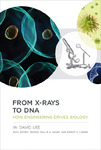Please use this identifier to cite or link to this item:
http://lib.hpu.edu.vn/handle/123456789/33393Full metadata record
| DC Field | Value | Language |
|---|---|---|
| dc.contributor.author | Lee, W. David | en_US |
| dc.date.accessioned | 2020-08-03T08:48:23Z | - |
| dc.date.available | 2020-08-03T08:48:23Z | - |
| dc.date.issued | 2013 | en_US |
| dc.identifier.isbn | 9780262019774 | en_US |
| dc.identifier.other | HPU2164258 | en_US |
| dc.identifier.uri | https://lib.hpu.edu.vn/handle/123456789/33393 | - |
| dc.description.abstract | An argument that technology accelerates biological discovery, with case studies ranging from chromosome discovery with early microscopes to how DNA replicates using radioisotope labels. Engineering has been an essential collaborator in biological research and breakthroughs in biology are often enabled by technological advances. Decoding the double helix structure of DNA, for example, only became possible after significant advances in such technologies as X-ray diffraction and gel electrophoresis. Diagnosis and treatment of tuberculosis improved as new technologies--including the stethoscope, the microscope, and the X-ray--developed. These engineering breakthroughs take place away from the biology lab, and many years may elapse before the technology becomes available to biologists. In this book, David Lee argues for concurrent engineering--the convergence of engineering and biological research--as a means to accelerate the pace of biological discovery and its application to diagnosis and treatment. He presents extensive case studies and introduces a metric to measure the time between technological development and biological discovery. | en_US |
| dc.format.extent | 247p. | en_US |
| dc.format.mimetype | application/pdf | |
| dc.language.iso | en | en_US |
| dc.publisher | MIT Press | en_US |
| dc.subject | Biological research | en_US |
| dc.subject | DNA | en_US |
| dc.subject | X-Ray | en_US |
| dc.title | From X-Rays to DNA: How Engineering Drives Biology | en_US |
| dc.type | Book | en_US |
| dc.size | 2,01 MB | en_US |
| dc.department | Sociology | en_US |
| Appears in Collections: | Sociology | |
Files in This Item:
| File | Description | Size | Format | |
|---|---|---|---|---|
| From-X-Rays-to-DNA.pdf Restricted Access | 2.07 MB | Adobe PDF |  View/Open Request a copy |
Items in DSpace are protected by copyright, with all rights reserved, unless otherwise indicated.
